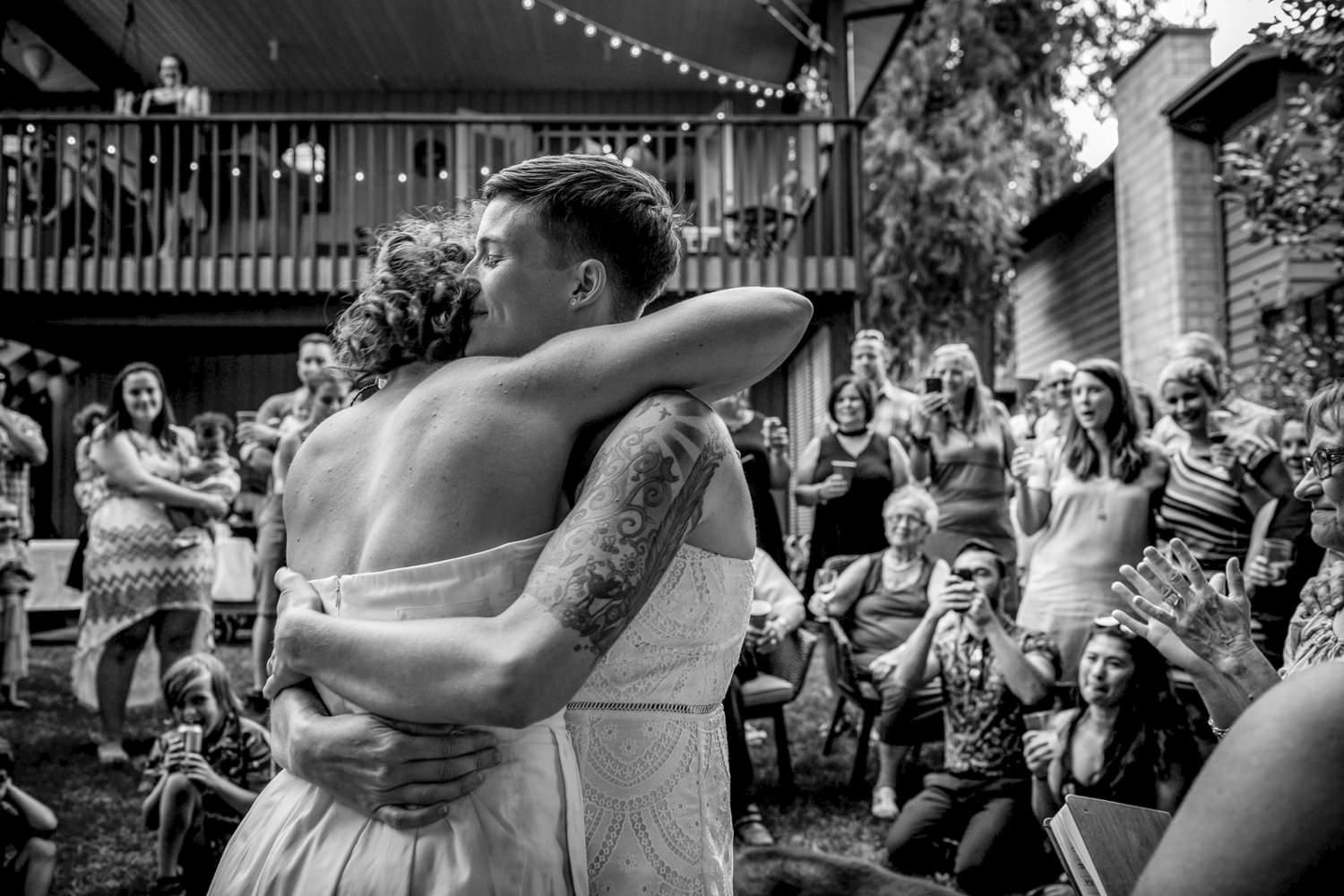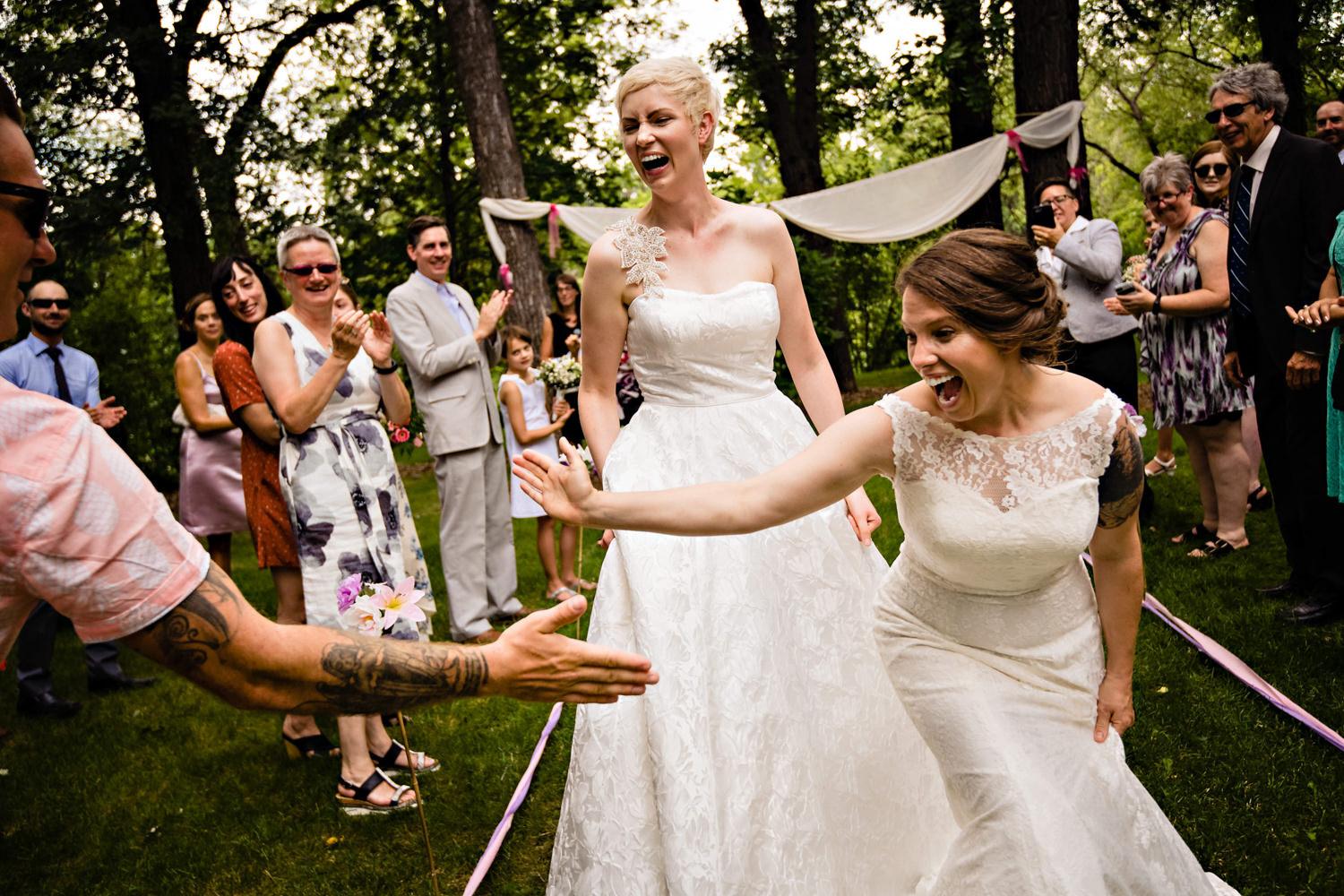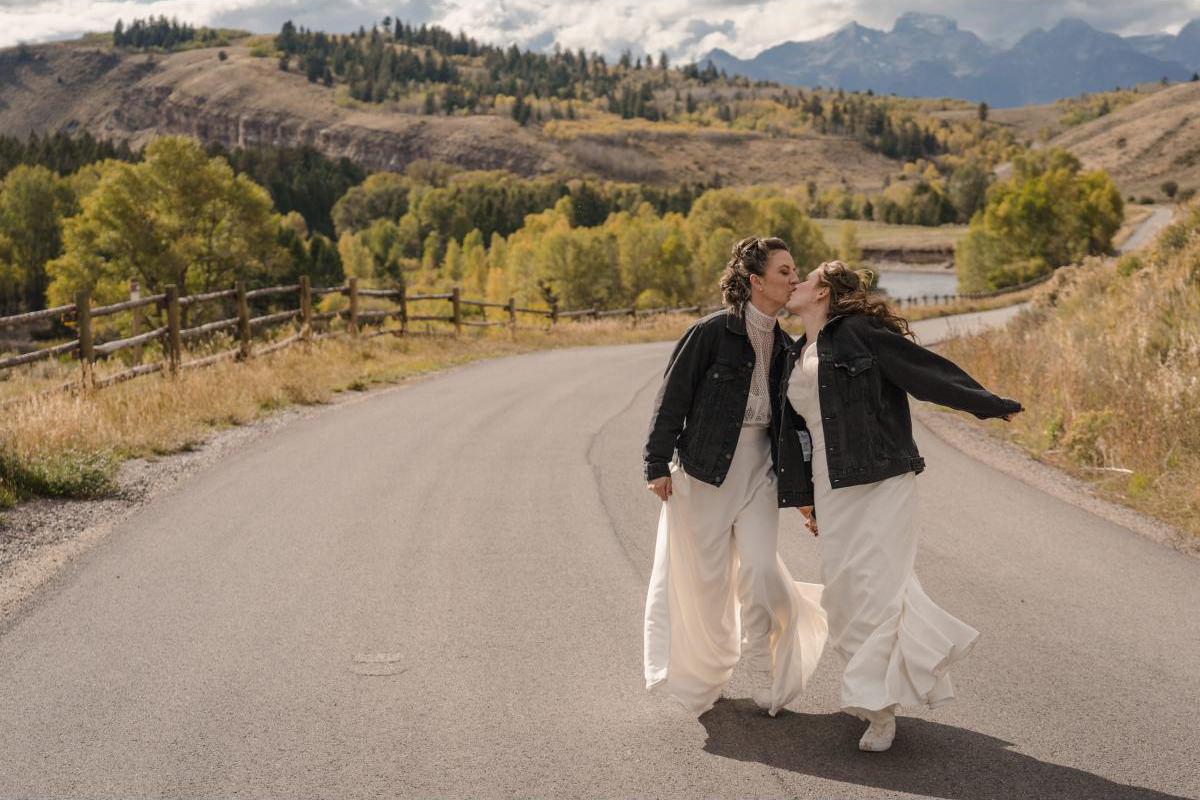Long before legal recognition, queer couples found ways to celebrate their love. Today, LGBTQ+ weddings in Canada honour that legacy—with pride, creativity, and intention.
Love and commitment are universal, but for many LGBTQ+ couples, the path to marriage has been paved with activism, resilience, and the quiet defiance of loving openly. In Canada, legal wedding rights for same-sex couples are relatively recent—but queer weddings, in one form or another, have always existed.
This article explores the history of LGBTQ+ weddings in Canada: how they evolved, how they’ve been reclaimed, and how they continue to shape the meaning of marriage today.

Before Legalization: Love Without Recognition
For most of Canadian history, same-sex and gender-diverse couples had no legal pathway to marry—but that didn’t stop them from creating ceremonies of their own.
- Many couples held commitment ceremonies, private rituals, or chosen-family celebrations.
- Some exchanged rings, vows, or blessings in homes, parks, or queer-owned spaces.
- These weddings weren’t recognized by the state, but they were deeply meaningful acts of love and visibility.
For decades, LGBTQ+ weddings were about honouring the relationship even when society refused to.
Canada Leads the Way: Marriage Equality Becomes Law
Canada became a global leader in marriage equality in the early 2000s:
- In 2003, Ontario and British Columbia became the first provinces to legalize same-sex marriage through court rulings.
- On July 20, 2005, Canada became the fourth country in the world to legalize same-sex marriage nationwide.
- The Civil Marriage Act granted equal marriage rights, regardless of sex or gender.
This change followed years of legal challenges, political advocacy, and the work of queer couples who refused to be erased.

Modern LGBTQ+ Weddings: Redefining Tradition
Many queer couples in Canada today are reimagining what a wedding can be.
- Ceremonies may be gender-neutral, deeply spiritual, or completely original.
- Wedding roles (bridesmaid, groomsman, etc.) are often rewritten to reflect chosen family and identity.
- Language is adapted—“partner,” “spouse,” or chosen terms that feel true to the couple.
- Attire, rituals, and structure are often nontraditional, prioritizing authenticity over convention.
For many, the wedding is not just about the couple—it’s about community, survival, and joy.
Cultural, Religious, and Intergenerational Complexity
LGBTQ+ couples often navigate layered identities:
- Some incorporate religious or cultural rituals from communities that may not fully accept them.
- Others find inclusive officiants or create new rites with meaning rooted in personal experience.
- Many weddings become acts of healing and visibility, especially for couples estranged from family or faith.
Every queer wedding reflects not just love—but a negotiation of history, hope, and belonging.

Chosen Family and Community-Centered Celebrations
A powerful theme in LGBTQ+ weddings is the role of chosen family:
- Friends, mentors, and queer elders often stand in for traditional family roles.
- Ceremonies may include collective affirmations, community blessings, or collaborative rituals.
- Some couples involve LGBTQ+ vendors and artists to support and uplift their own communities.
These weddings are as much about community affirmation as they are about romantic commitment.
Photographers and Queer Representation
For photographers, LGBTQ+ weddings offer a chance to:
- Document love stories that were historically erased
- Capture moments of authenticity, vulnerability, and joy
- Use inclusive language and respect each client’s pronouns, boundaries, and identities
- Reflect a wide spectrum of expressions—from soft to fierce, minimalist to maximalist
LGBTQ+ wedding photography isn’t a trend—it’s a responsibility and a celebration of visibility.

Related Reading in the History of Weddings Series:
- The History of Wedding Vows
- The History of Marriage Licenses in Canada
- The History of the Wedding Ceremony
- The History of Wedding Fashion
Continue Planning Your Wedding
Ready to dive into the details? How to Find the Perfect Wedding Photographer: The Ultimate Guide to Making the Right Choice